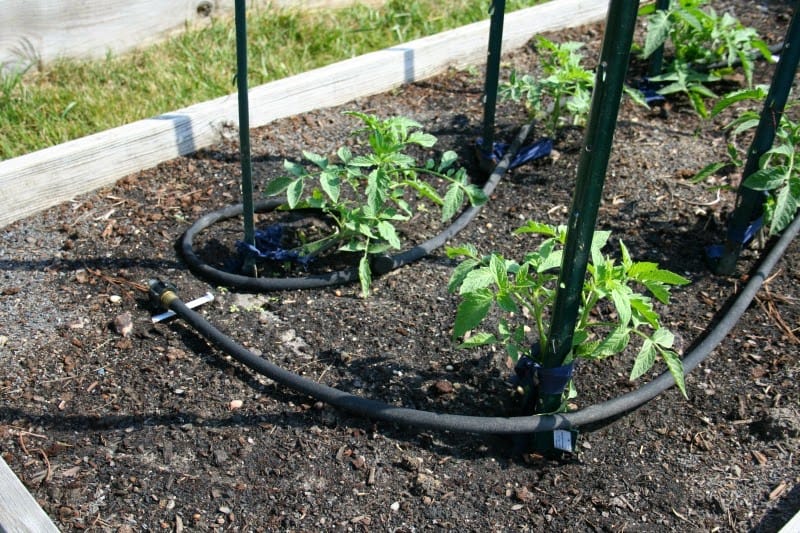Why are my tomatoes splitting? Call them cracks or splits, they still amount to the same thing: a problem with your summer tomato crop that needs to be solved.
Splitting or cracking tomatoes aren’t just ugly. They rot faster, and the cracks invite insects and birds to feast on your produce. I always have problems with crows finding the smallest cracks and using their beaks to peck open tomatoes.
If your tomatoes are splitting, there are a few simpler reasons and easy fixes I’ll discuss below. You can also watch the video if you prefer. It’s under two minutes and offers a fast, simple way to listen to this blog post.
Crack-Resistant Tomato Varieties – from Horticulture
Why Are My Tomatoes Cracking? – Article
Video – Why Are My Tomatoes Splitting
Why Tomatoes Develop Cracks
There are several reasons why tomatoes split or crack:
- Too much water after a long drought, such as a few days or weeks without rain followed by a sudden downpour;
- Uneven or overall too much water
- Some varieties are just prone to splitting
The primary reason tomatoes split is too much water or uneven watering. Tomato skins can’t expand rapidly enough to accommodate all the water absorbed by the roots. The skin splits under the pressure of too much water. If you want to know, “Why are my tomatoes splitting?” Look first to the amount of water they are getting. I’ve found that this is the primary cause almost all the time.

Some varieties are also simply prone to splitting. I planted Purple Delight tomatoes this year and I will NEVER plant them again. They are horrible and split at the slightest provocation. I end up picking them very under-ripe and letting them ripen on the countertop to prevent splitting. Once they split, they shrivel up like an old, empty balloon. Ugh. Never again.
Choosing varieties that resist splitting and cracking helps prevent a ruined crop of tomatoes. If tomatoes do split, they can still be used as long as mold or insects have not penetrated deep within the flesh. If the tomato is moldy, throw it out.




